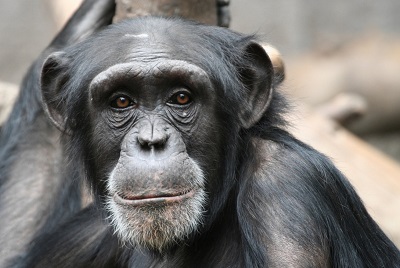The human practice of copying the behavior of others make us effective learners and allows skills, knowledge and inventions to be passed on from one generation to the next according to Daily mail.
Although decades of research has shown that apes are poor imitators compared to children, a new study has found that both humans and chimpanzees imitate to a similar extent.
About 10 per cent of the actions produced by either humans or chimpanzee at a zoo was an imitation of the other species’ interactions, and there was also overlap in the types of actions imitated by both species, including hand clapping and kissing.
The study suggests that imitation in apes might have evolved for communicative and social purposes, besides the more widely acknowledged learning function
The imitative superiority of children compared to apes has been attributed to a higher social motivation to engage others in communication and the sharing of experiences.
Currently, theories suggest that apes are worse imitators because they lack this social and communicative side of imitation.
However, prior studies behind these theories focused on imitation in the field of learning solutions to physical problems.
But a new study by researchers instead focused on the interactive side of imitation directly, finding that the difference between humans and chimpanzees is not as clear cut.
To conduct the study, researchers at observed the spontaneous interactions between zoo visitors and chimpanzees.
The subjects were five chimpanzees, and the zoo visitors that attempted to interact with the chimpanzees.
The chimpanzee exhibit comprises indoor quarters and an outdoor area.
Two of the indoor rooms are display areasm, where visitors and chimpanzees can interact closely through glass.
A total of 52 hours of observatiob was conducted during a 21-day period, between June and August.
Researchers found that both species imitated to a similar extent.
‘This took place in a typical zoo setting, where both chimpanzees and visitors tries to attract each other’s interest in various ways,’ said Dr Tomas Persson, one of the co-authors of the study.
‘We studied these interactions.’
There was also significant overlap in the type of actions imitated by the two species.
For example, both humans and chimpanzees imitated common actions, such as hand clapping and kissing or knocking on windows.
‘The actions that were copied by both humans and chimpanzees were neither novel nor original and suggest that imitation was not at all about learning,’ said Dr Persson.
‘The goal seemed to be purely social and communicative in nature,’ says Dr Persson.
The results of the study also show that interactions that included imitation lasted longer than those that didn’t.
As such, imitation of simple gestures was a good way to initiate contact and keep the interaction going.
‘Several times we observed prolonged interactions that took on a game-like back-and-forth character, which is reminiscent of how preverbal toddlers interact by way of imitating other’s play actions’ says Dr Gabriela-Alina Sauciuc, who conducted the study together with Dr Persson.
According to the researchers, their study is the first to systematically investigate spontaneous imitation between zoo chimpanzees and zoo visitors, and to highlight the social and communicative role that the imitation of familiar actions may have during such interactions.
N.H.Kh

